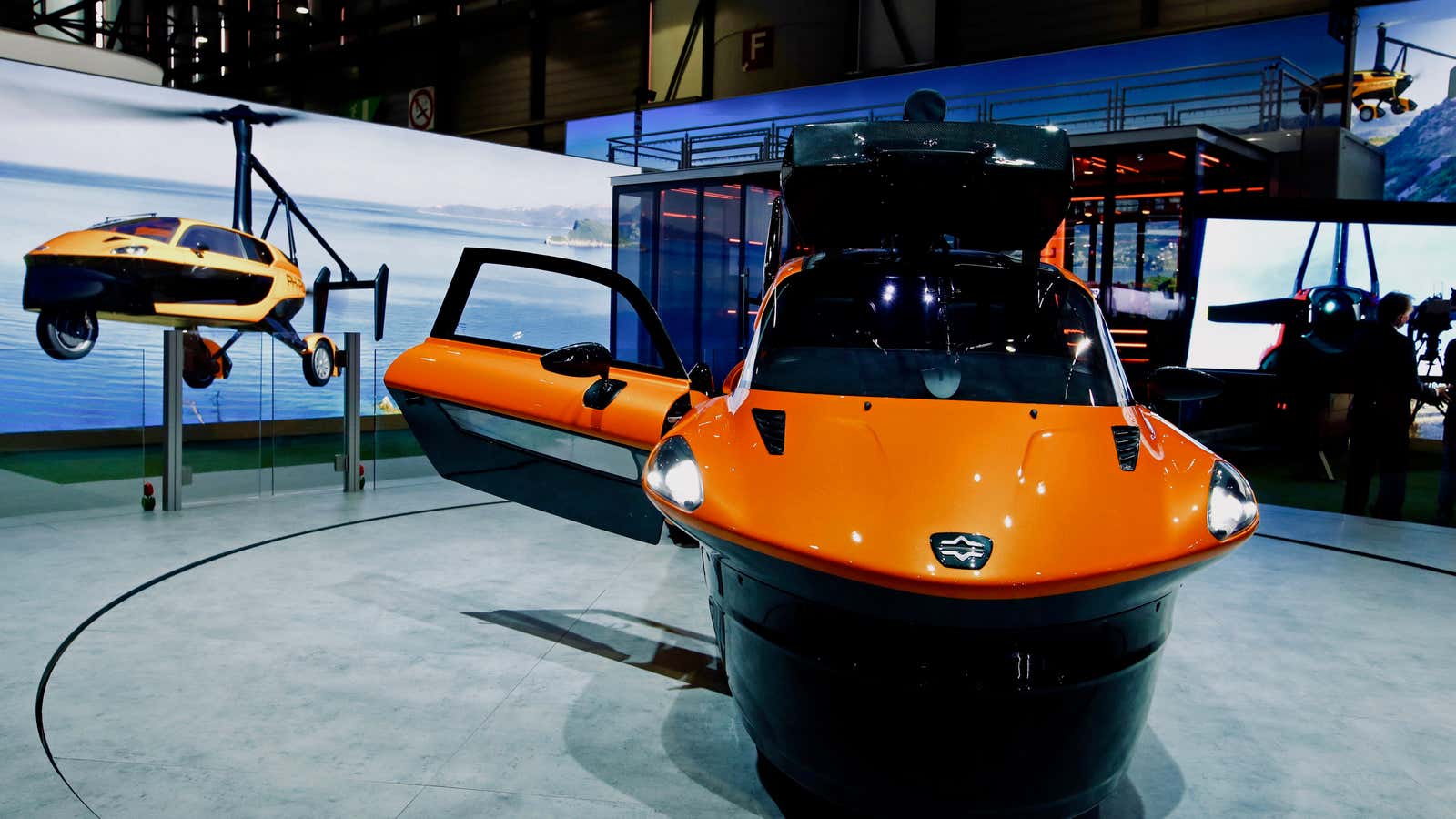Rising sea levels likely spell doom for Miami. Developer Dan Kodsi doesn’t worry about that, and it isn’t why he’s made plans to convert the Paramount Miami Worldcenter’s observatory into a flying-car port. Kodsi, like others across the globe, is excited about these stuff-of-sci-fi vehicles becoming a reality.
Uber this month announced that it’s working with five companies to develop flying cars, predicting it will be holding flying taxi demonstrations in 2020 and be running commercial trips by 2023. Japan has a government initiative and eager businesses looking to promote this futuristic mode of travel and readying the country for change (paywall). The Dutch tech company PAL-V is pre-selling two flying car models at $400,000 and $600,000. The technology has already been tested in Dubai, and Google co-founder Larry Page is developing flying taxis (paywall) in New Zealand. “So it’s happening,” Kodsi tells the Miami Herald (paywall).
In light of the developments, he believes it won’t be long before the glass observation deck atop his 60-story luxury condo building will be transformed into parking for flying cars, officially known as vertical takeoff and landing, or VTOL, vehicles. He announced last spring that the Paramount would accommodate VTOL transport and that a landing pad would replace the glass observatory, along with a lobby for air travelers.
But not everyone is as optimistic about the futuristic vehicles. A Bloomberg opinion piece (paywall) from last month states that the “flying-car future looks like a dystopia.” It notes that the new VTOL vehicles are a lot like the old ones, which are better known by the name of “helicopters.” Apart from a few flashy innovations that are being contemplated and developed—like the ability to transform from air traveling vehicle to road car, and alternative-energy power—the flying cars are no big deal, the piece argues. They are also just as likely as helicopters to be toys for the super rich rather than accessible transportation possibilities for the Ubering masses.
There are some notable differences between helicopters today and the flying cars that developers envision, however. Uber says its VTOL vehicles will be powered electrically and that it intends to make air transport central to its system. To do that, it will need landing agreements with buildings that have the proper parking with an electric charging provider, implementation of government regulation at all levels, battery suppliers, and the vehicles themselves.
Obviously, there is a long way to go before you’ll be able to Uber by air, but progress toward that goal has been made since the company first announced its plans for air transport in 2016. Kodsi and other future enthusiasts are readying themselves because they think it may not be too long before the flying cars really take off. He already told the Miami Herald last year that “all of this could exist tomorrow morning.”
